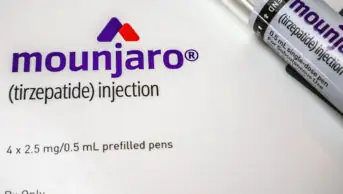This month, my aim was to explore the highly cited review articles published in 2022. What could have made these articles appeal to other researchers, from among the 44 review articles published in the journals in that same year, leading to the high number of citations?
I met with Zita Zachariah (ZZ), the new managing editor at The Pharmaceutical Journal, who oversees the Royal Pharmaceutical Society’s journals, published in partnership with Oxford University Press, and we discussed what citations are and what they mean for a research paper, before dissecting the highest cited review paper from each of the three journals: Journal of Pharmacy and Pharmacology (JPP), International Journal of Pharmacy Practice (IJPP), and Journal of Pharmaceutical Health Services Research (JPHSR).
The importance of citations
ZZ: What do we mean by ‘citations’ and why they are important?
PD: Journal citations are fundamental to good research. They are a way of making sure that ideas, data or arguments published in a paper are acknowledged for their origin, by those who draw on them in their own work. Citations also show how research is interconnected with the work of others, rarely taking place in isolation. To convey their importance using simple terms, we can think of citations like any other type of user ‘recommendation’.
However, instead of looking for five-star reviews, we look for a paper’s total number of citations, with high citations showing the work is making valuable contributions to the field, and is therefore potentially relevant, useful, or even ground-breaking. An amusing article about journal citations, published in the Smithsonian Magazine in 2014, brings us back down to earth.

ZZ: The first highly-cited paper, published in JPP, is entitled ‘Doxorubicin-induced cardiotoxicity: causative factors and possible interventions’ and has so far been cited 30 times. Is this a good number? What should we look for when making a judgement about a paper’s citation numbers?
PD: This is an excellent question that cannot be answered without a few provisos.
Citations are quite field-specific, with pharmacy research traditionally receiving quite low citations. Having said that, any paper should be cited at least once. This shows that at an absolute minimum, one other author(s) has read it and used it in their own work. Ideally though, authors would expect their paper to get more than one citation, especially over time. As a rule of thumb, a paper might be expected to get as many citations per year as the journal’s impact factor.
See the equation below explaining how impact factors are calculated:

So, if a journal has an impact factor of 20 — which is, relatively speaking, very high — then a paper published in that journal should receive at least 20 citations per year to be deemed worthy of its ‘sister’ papers (i.e. other publications in the same journal).
JPP has an impact factor of 2.8, so we would expect this review paper to receive at least 2.8 citations per year (rounded up to 3.0), or 5.6 citations (rounded up to 6.0) over the past two years. The fact that it has received 30 citations since its publication in August 2022 makes this a highly cited paper by objective measures.
Meaning of impact factor
ZZ: For our audience, we should also add the caveat that journal impact factor is not a measure of the quality of the article but only one (albeit the most well-known) measure of its impact. Why do you think this paper has received such interest in the field? What makes it special?
PD: As a rule, review papers do tend to be cited more than stand-alone, primary research articles. By bringing together other published papers and synthesising the findings to answer relevant questions, review papers can be comprehensive and all-encompassing, proving useful to a breadth of researchers, who might be interested in the topics covered, methodologies or final synthesis. Of course, researchers citing someone’s work want to make sure that they have thoroughly read and understood the paper, and are citing it for the right reasons.
So, one thing we can do, is to look at the 30 papers that have cited our review paper, to make a judgement about why it might have proved so popular. The other way of answering this question is to look at the paper itself, and the content and approach taken to writing it.
Looking at the paper, it covers much ground. It is not a ‘systematic review’ as such, but a summary of current understanding in terms of doxorubicin’s metabolism, mechanism of action, recent and notable advancements in its drug delivery systems, cardiotoxicity mechanisms, as well as cardioprotectant therapeutics and future work in the field. This breadth is reflected in the types of articles that have since cited the work. For example, citing works examine potential strategies for mitigating doxorubicin-induced cardiotoxicity, and the use of nanotechnology for its delivery.
Highly cited papers
ZZ: The most cited review paper published in IJPP in 2022 is entitled ‘Clinical interventions to improve adherence to urate-lowering therapy in patients with gout: a systematic review’, which received 13 cites. Can you tell me briefly what makes this paper popular with other researchers?
PD: Unlike the first paper, this study is a ‘systematic review’ of existing interventions, which means the authors have methodically searched databases to find all the relevant papers on the topic, assessed their quality and brought them together to answer their research question.
In this case, they wanted to know — in simple terms — what could be done to improve patients’ adherence to medicines that lower urate serum levels in gout. Before looking at the citations, I would guess that the paper would have appeal to others conducting systematic reviews in pharmacy, especially involving adherence interventions, as well as those interested in the specific clinical area. After all, interest in medication adherence research has grown in abundance since first discussed some 50 years back.
Looking at the citations now, I can see that in fact most of the papers citing this review are about gout, which shows the relevance of the work within the therapeutic field.
ZZ: Finally, the most cited paper from 2022 published in JPHSR is entitled ‘Analysis of cancer drug prices: a narrative review of literature’ and was cited 5 times. Do you have any additional thoughts or reflections on the wider recognition of this paper?
PD: This article was a literature review on how cancer medication pricing affects affordability and availability around the world. On paper, I would guess it had appeal by virtue of its international reach. This is based on the logic that a paper with international reach would be relevant to a wider audience of readers, increasing its likelihood of being cited.
However, rather than providing all the answers I want to challenge readers to visit the JPHSR website for themselves, to examine the paper and write in to tell us why they it think was so highly cited. I would be delighted to hear your views.


